I LOVE my job. Really REALLY love it. That makes it pretty easy for me to wake up every morning keen on what project I get to delve into. That doesn’t mean that every day is a walk in the park. Being a long arm quilter requires a LOT of decision-making considering a wide variety of factors:
1. What does the customer want to spend? Often I will ask the client if they want an all over design or something more custom. Some say they want to keep it inexpensive, which means all over.
Some say they want it for a quilt show, which generally means more $.
I was working on a quilt today that I gave an estimate for at $0.035 per square inch. I charge at least 4 cents when straight lines are involved, so that was not going to happen in this quilt. I had to figure out other designs to work in the spaces instead.
2. What design does the customer want? Some quilt makers have a vision of what they want the outcome to look like, others want the quilter to ‘do what they do best’ (my FAVORITE thing to hear!) One super important consideration is whether the client prefers a more modern look,
or classic/traditional. Some customers like feathers,
others want more graphic quilting for a modern outcome.
3. What does the fabric say? That is where I often look for inspiration. If there are swirls, curls, flowers or circles on the fabric, those patterns induce me to quilt something similar.
4. What does the pattern say? This is really important, even with all over designs.
When I receive Quilts Of Valor, they often have star patterns on them. With that type of pattern I quilt in a curvy pattern, so as not to accentuate the sharp angles already present in the pattern.
With a custom design, such as today’s project, there are sometimes various blocks that will each be quilted differently. Two things can be exemplified at this point: depth and movement.
A. Depth – by quilting at different densities (more quilting in one area than another, such as in the photos below), one can create depth in the quilt surface. It gives the flat surface more personality aside from the change in quilting pattern.
B. Movement – pinwheels come to mind here, because this block is one that emulates a moving object. So to quilt it in a fashion that simulates movement also adds visual appeal to the quilt. The pinwheels above showcase this as well as those below.
5. Overall cohesion is INCREDIBLY important to the quilt, and with custom quilts this is where planning comes into play. Using the quilt I was working on today again as the example, I have red triangles inside the quilt as well as along the border. I haven’t quilted either yet because I want them to tie in to one another and haven’t made the final decision as to the design. Also, with the pinwheels (the ‘background’ spokes), I wanted to quilt them more densely than the curls on the forefront spokes, and actually tested out a small meander.
But it seemed out of place so I removed those stitches and tried the wavy lines, which I felt added the movement in the photo above. I may end up using wavy lines in the red spaces as well.
There can be other factors, such as timeframe (less time = less quilting), anticipated drape (highly quilted quilts are much stiffer), and quilt use intention (I often tell customers they may not want custom quilting on a gift for a 4 year old, it will get washed 100 times and they won’t know the difference).
Regardless of the time it takes to come up with the perfect quilting pattern, it is highly rewarding to reach that light-bulb moment and then find that your conception has become a beautiful reality. Happy quilting my friends!







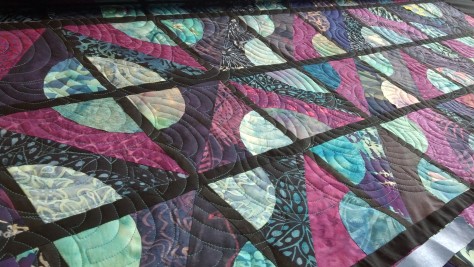

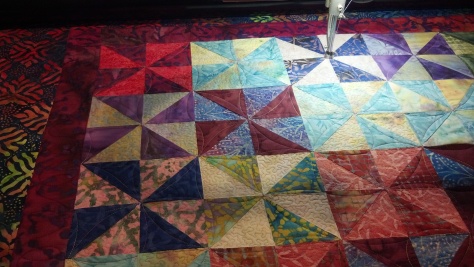


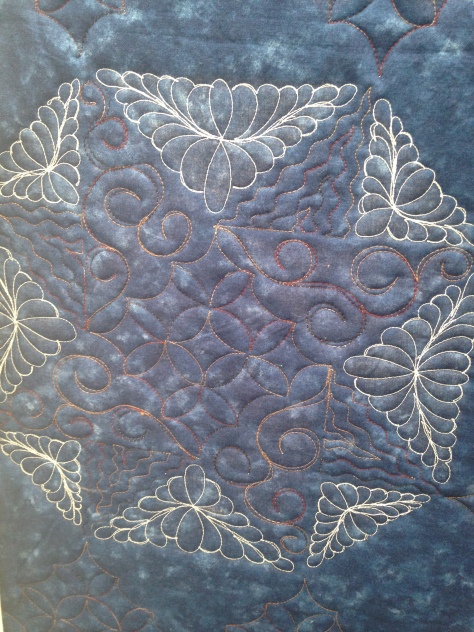


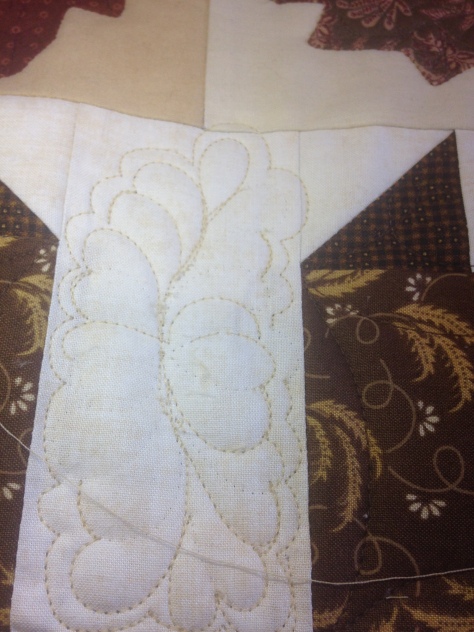
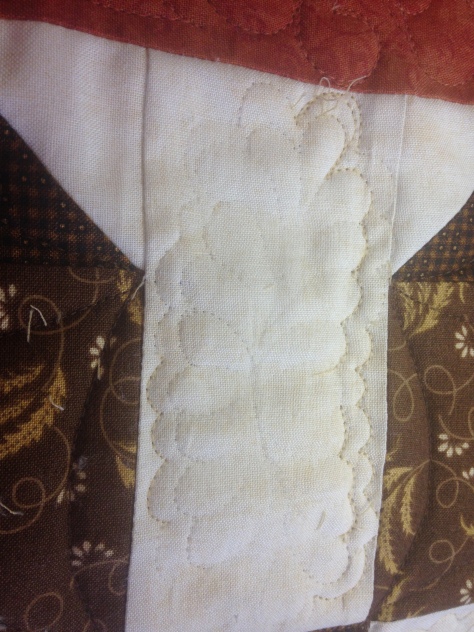

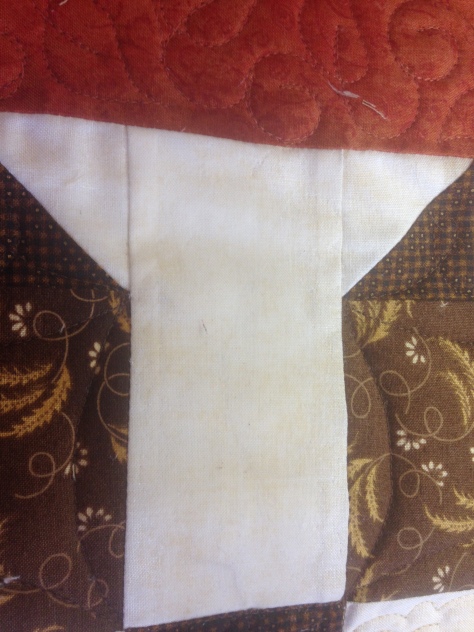

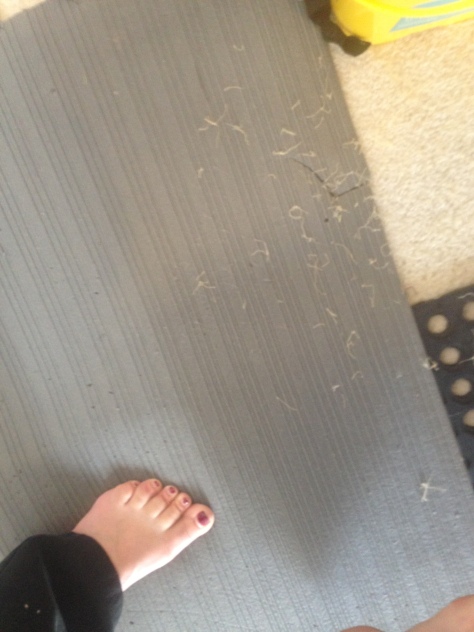
You must be logged in to post a comment.